
“Over the years, I’ve periodically found myself in situations that felt desperate and, in those moments, I’d feel that I needed to make certain things.”
— David Wojnarowicz
An accelerating global pandemic, a malicious, racist, vote-suppressing, scientifically illiterate and mind-bogglingly incompetent White House and Republican party, worsening economic insecurity, growing wealth inequality, intensifying housing and healthcare crises, local Democrat politicians tear-gassing Oregonians protesting police brutality and supporting Black lives…

…it is hard to understate the stress and anxiety of so many at this moment.
LEARN MORE: A Racist in the White House
LEARN MORE: Ethnic antagonism erodes Republicans’ commitment to democracy
LEARN MORE: ‘This Must Be Your First’
LEARN MORE: Sexism, racism, and nationalism: Factors associated with the 2016 U.S. presidential election results?
LEARN MORE: ‘Scientific American’ Breaks 175 Years Of Tradition, Endorses A Presidential Nominee
LEARN MORE: Scientific American Endorses Joe Biden
LEARN MORE: Nature Endorses Joe Biden, Latest Top Scientific Journal To Condemn Trump’s Actions
LEARN MORE: Why Nature supports Joe Biden for US president
LEARN MORE: In Suspense: Donald Trump’s Efforts to Undermine Public Trust in Democracy
LEARN MORE: Republicans…are devising new ways to limit voting this fall, seeking to capitalize on the fears of COVID-19
LEARN MORE: Human Rights Group Finds Portland Police Violated UN Guidelines During Protests
LEARN MORE: When Portland police use tear gas, protesters aren’t the only ones breathing it
LEARN MORE: Returning to find a voice
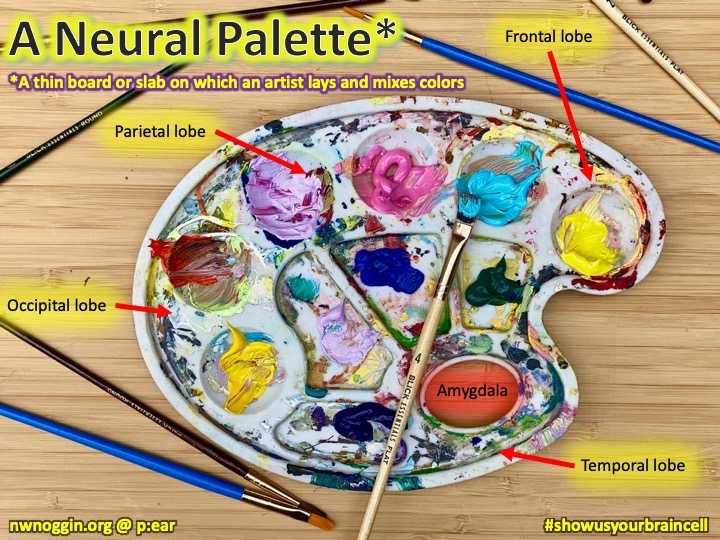
Thankfully, art helps.
“I know that when I finish a drawing, my anxiety level decreases. When I draw it means that something bothers me, but I don’t know what it is. So it is the treatment of anxiety.”
— Louise Bourgeois
There is evidence that even brief art making activities reduce the release of stress-related hormones – regardless of how much past experience people have with making art.
LEARN MORE: Reduction of Cortisol Levels and Participants’ Responses Following Art Making
LEARN MORE: Creative Arts Interventions for Stress Management and Prevention—A Systematic Review
LEARN MORE: Why Art? Noggins go to Washington
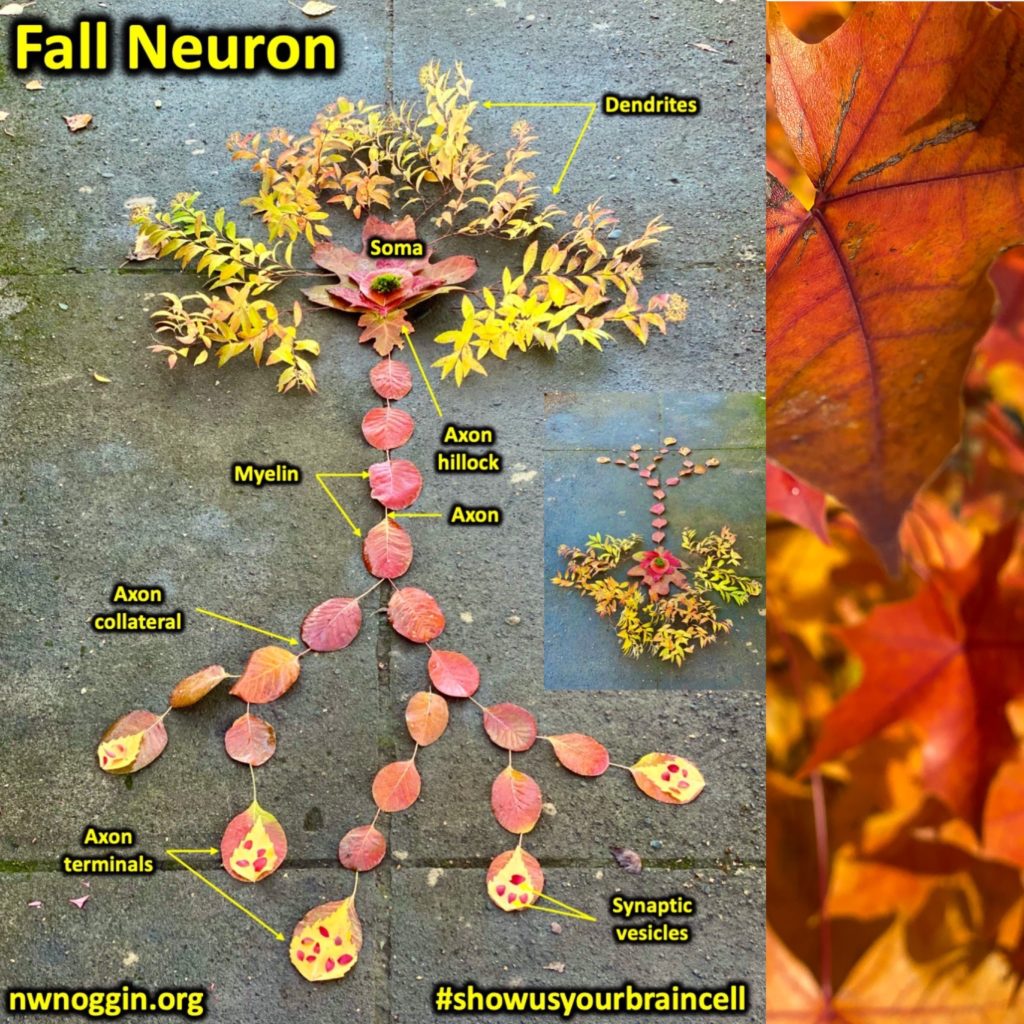
“Since I was a young girl I wanted to make art. My hope in art is to spread the joy and the love of being human. I think a lot about what it means to be an artist in the world today. It is a time of much turmoil and strife. And yet, we can see light all around us.”
— Yayoi Kusama
Art spurs resilience, and helps us deal with challenging circumstances. After a stressful event, art can offer a positive way to cope with emotions, partly by focusing attention away from anxiety-provoking experiences. In addition, having a non-verbal way to express your feelings may help you deal with stressors when you’re exposed to them again.
LEARN MORE: The Influence of Art Making on Anxiety: A Pilot Study
LEARN MORE: The Effectiveness of Art Therapy for Anxiety in Adult Women: A Randomized Controlled Trial

LEARN MORE: A brain garden grows @ p:ear
Art can also support a sense of purpose, self-efficacy, and empowerment, helping to motivate us towards positive action, particularly when people are given the space to share their creations. We’ve seen it in classrooms and public spaces with youth who are often marginalized by our educational system and current societal structure.
LEARN MORE: Your brain on preparedness
LEARN MORE: Seeing us all through research & art
LEARN MORE: Returning to find a voice
Staying Safe

During this year’s American Thanksgiving – a holiday marred by assaults on indigenous people by white Europeans, some of whom deliberately spread smallpox – we had another deadly virus on our minds. Traveling through crowded airports, and gathering indoors with extended family to cook and share stories and meals, also offered ideal opportunities for spreading the potentially deadly COVID-19.

LEARN MORE: COVID-19 Projections
LEARN MORE: Planning Your Holidays During the COVID-19 Pandemic
LEARN MORE: The Myths of the Thanksgiving Story and the Lasting Damage They Imbue
LEARN MORE: The true, dark history of Thanksgiving
LEARN MORE: Why We Should Make Thanksgiving a Day for Atonement Instead of a Racist Feast
LEARN MORE: Smallpox and the Native American
LEARN MORE: British biological warfare
Make Your Own Coronavirus!
So if we’re going to be wearing masks, physically distancing from each other and staying safe at home this holiday season why not grab some easily accessible art materials (pipe cleaners, wire) and build your own SARS-CoV2?!
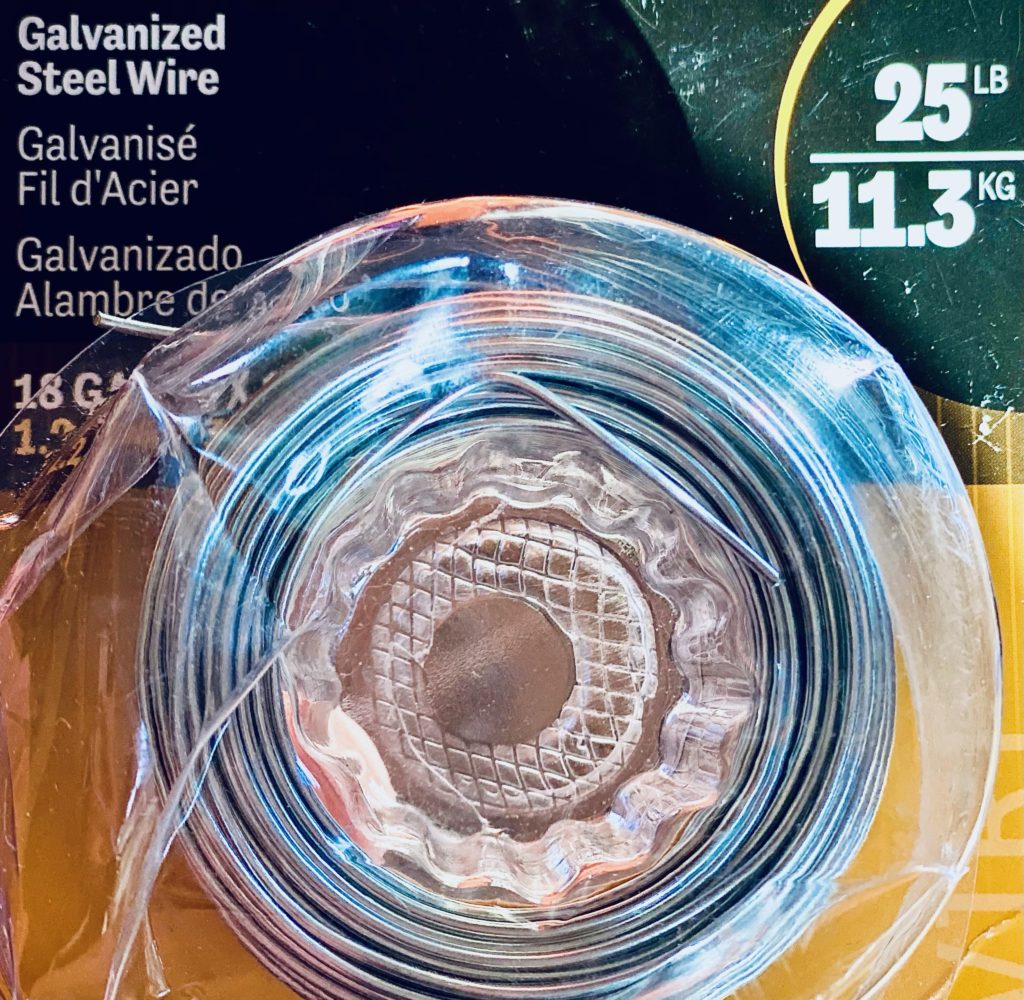
“All life is an experiment. The more experiments you make the better.”
— Ralph Waldo Emerson
I’ve made a few pipe cleaner viruses in 2020, but this time I chose to reinforce the basic spherical structure (the viral envelope) using 11.3kg (25lb) galvanized steel wire.
Viruses are in some ways surprisingly simple, with a few essential parts. There is the viral envelope, the nucleic acid instructions (for the SARS-CoV2 coronavirus it is RNA), some critical membrane proteins and additional sugars which attach, forming “glycoproteins.”
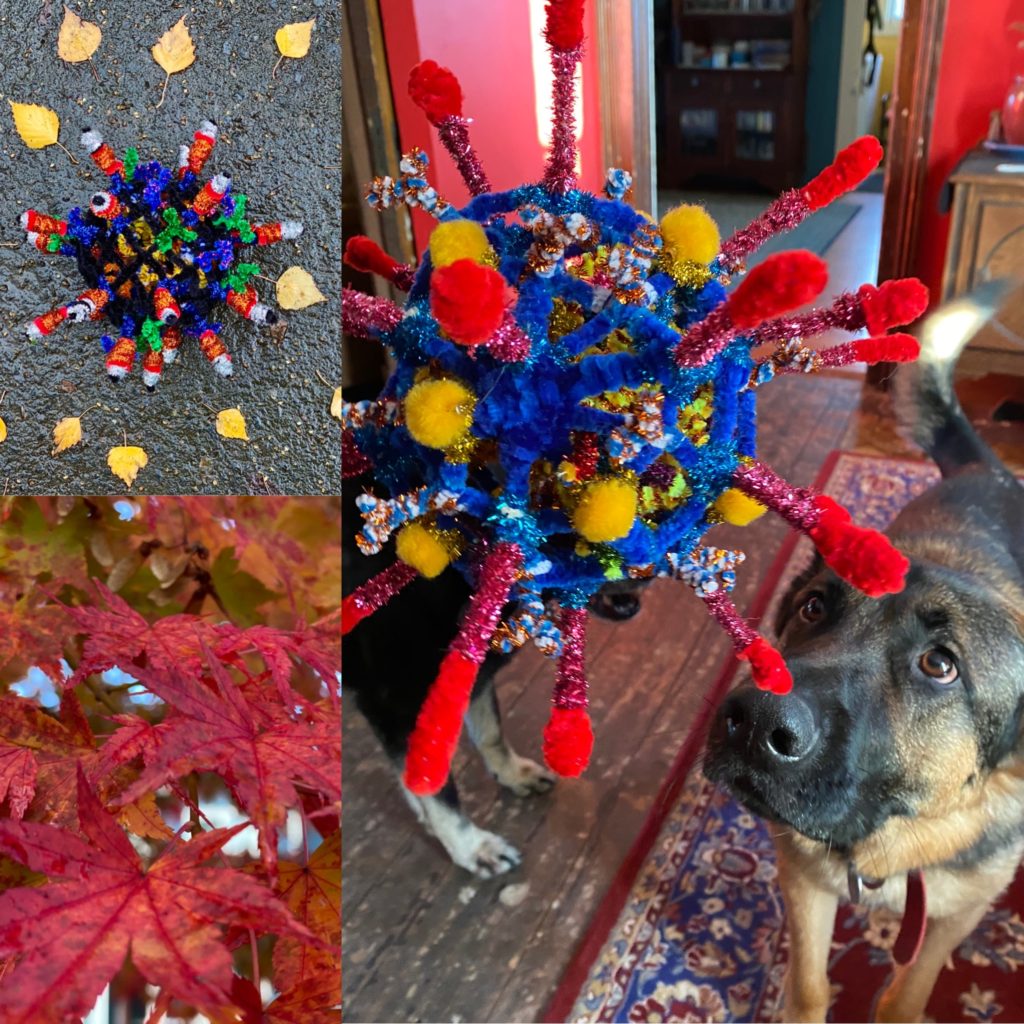
The RNA in SARS-CoV2 (the virus which causes the disease COVID-19) has about 30,000 nucleotide letters coding for the four structural proteins which let it infect, replicate and spread around the globe.
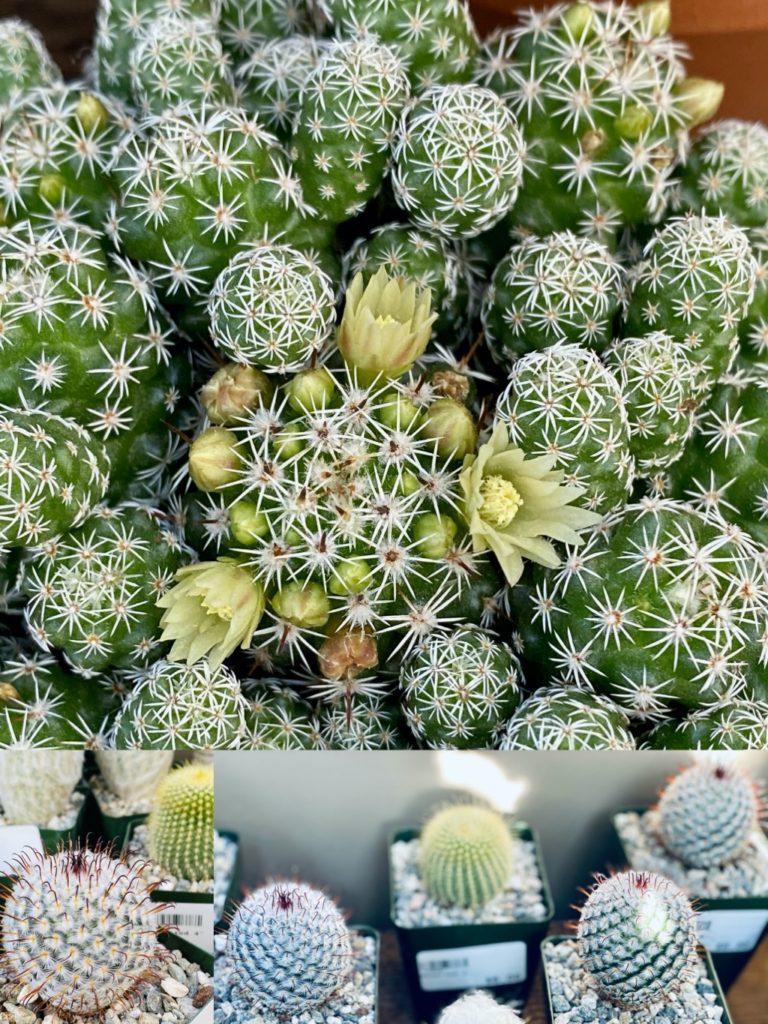
The most well-known is the spike glycoprotein, which menacingly studs the surface of the viral envelope like cactus spines. The spike binds to a protein receptor embedded in our own cell membranes known as ACE-2 (angiotensin converting enzyme 2) to gain entry. ACE-2 receptors are found on many human cells, including those in our lungs and nose.
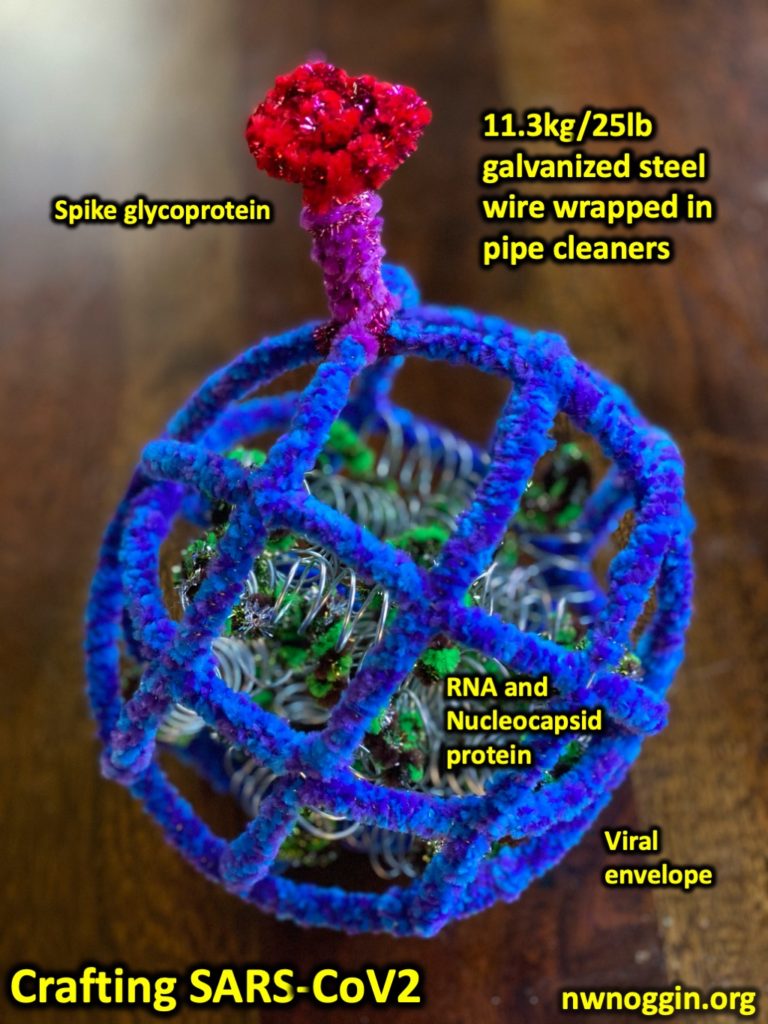
LEARN MORE: Angiotensin-Converting Enzyme 2: SARS-CoV-2 Receptor and Regulator of the Renin-Angiotensin System
LEARN MORE: Advances in research on ACE2 as a receptor for 2019-nCoV
The steel wire is particularly useful for stabilizing these spikes. If you only stick with pipe cleaners, the jutting red proteins on the surface will bend every time you set your virus down.

A pair of pliers with a built in wire cutter from a local hardware store is very helpful for twisting sections at points of contact to secure the proteins and viral envelope in place.

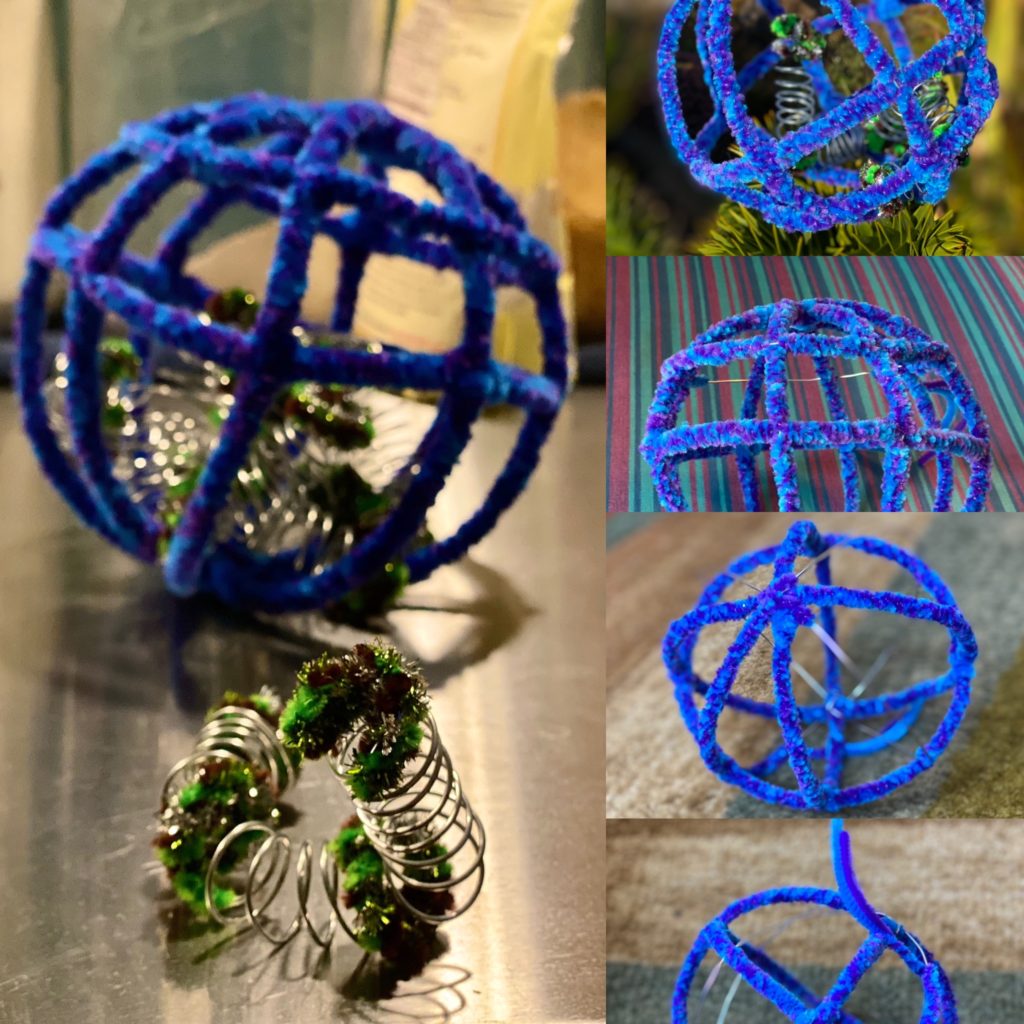
The wire also makes for excellent spiraling viral RNA!
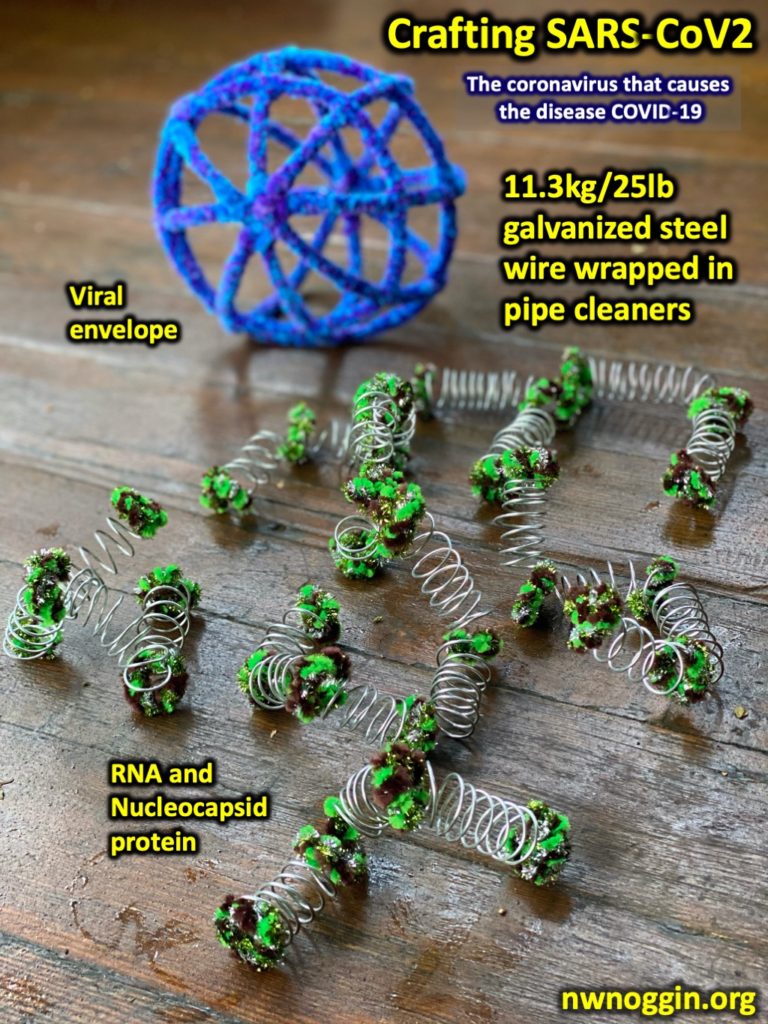
I chose a basic wire form for each spike glycoprotein and, using the pliers, twisted these on to my viral envelope. Then I wrapped them in colorful pipe cleaners.

Individual variability in forms adds more visual interest, and perceptually smooths out imperfections in the spherical shape of the viral envelope.
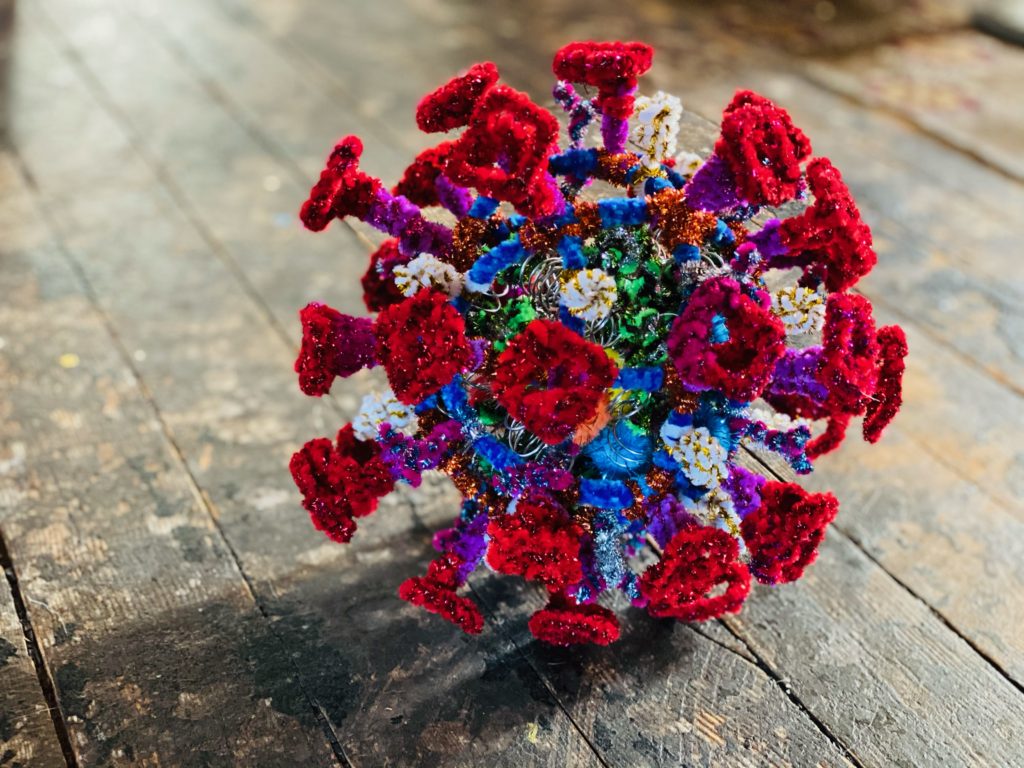
In fact, it’s pretty amazing how the structure takes on a strikingly compelling, holistic, organic form as more and more colorful spike glycoproteins are added.
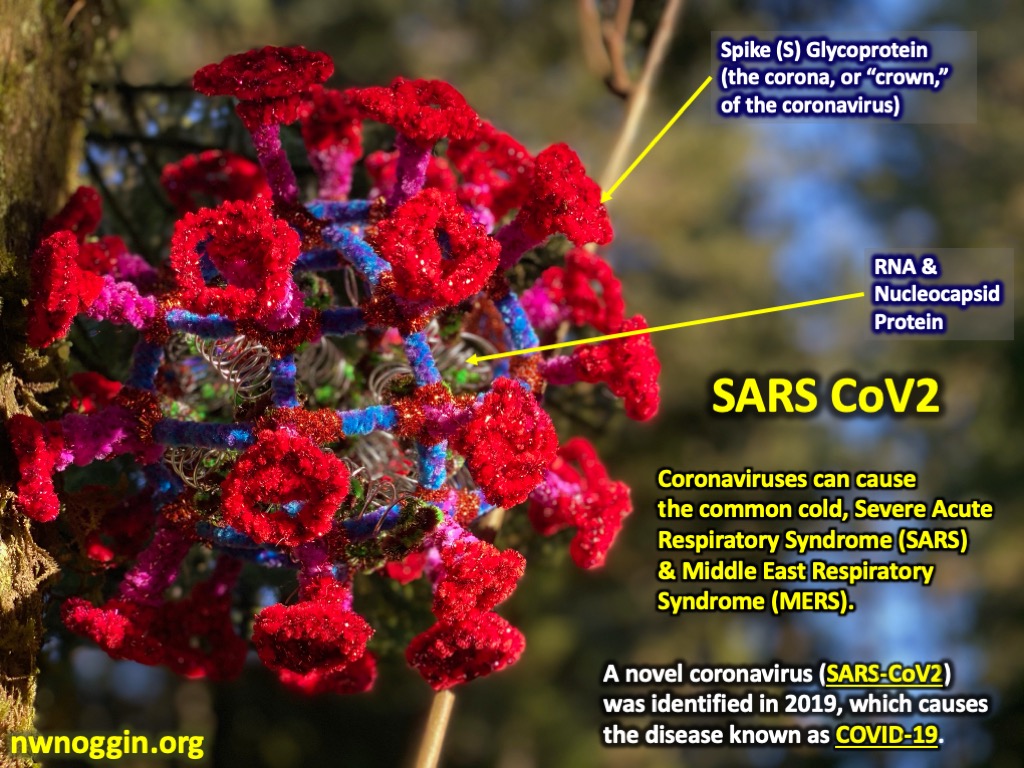
The other three SARS-CoV2 proteins are Nucleocapsid, Membrane and Envelope.

The Nucleocapsid protein is bound to the RNA itself, facilitating its replication and expression in human host cells. The abundant Membrane glycoprotein helps build the virus, while Envelope glycoprotein both contributes to assembly and affects coronavirus engagement with infected cells.
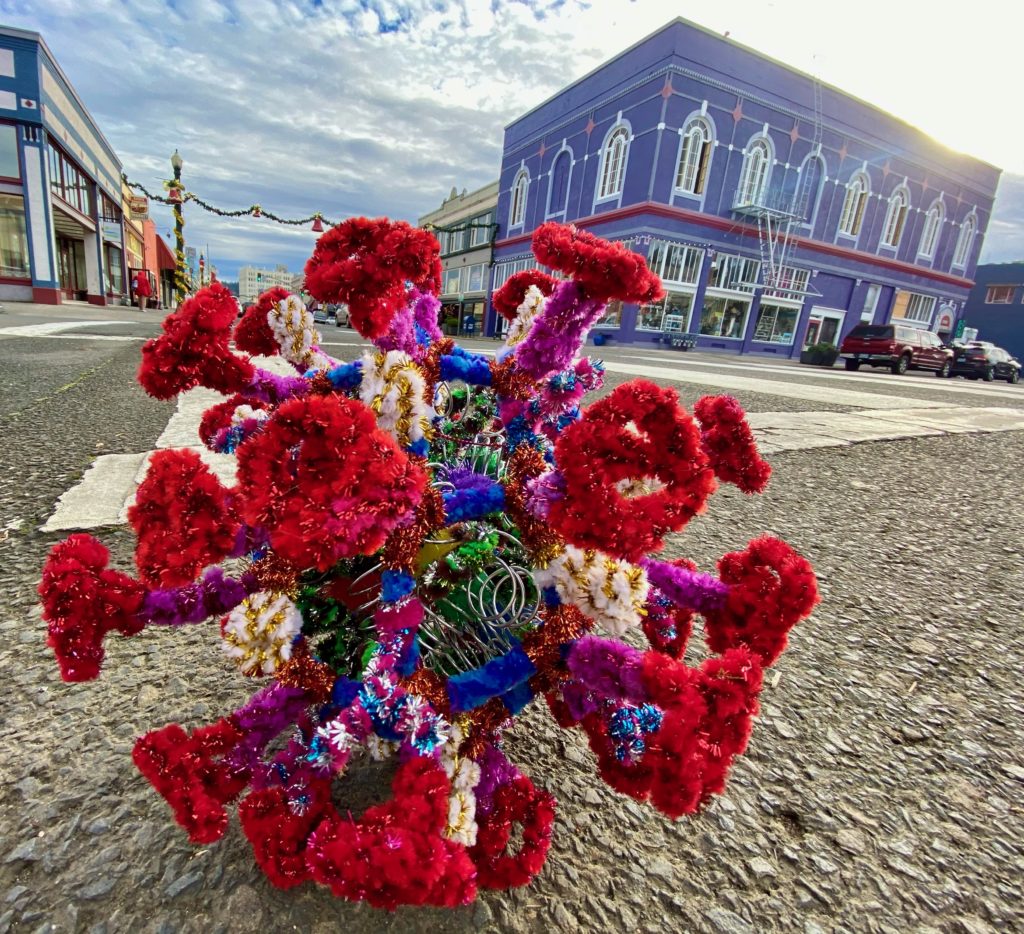
It’s also remarkable how immediately recognizable this viral form has become in 2020!
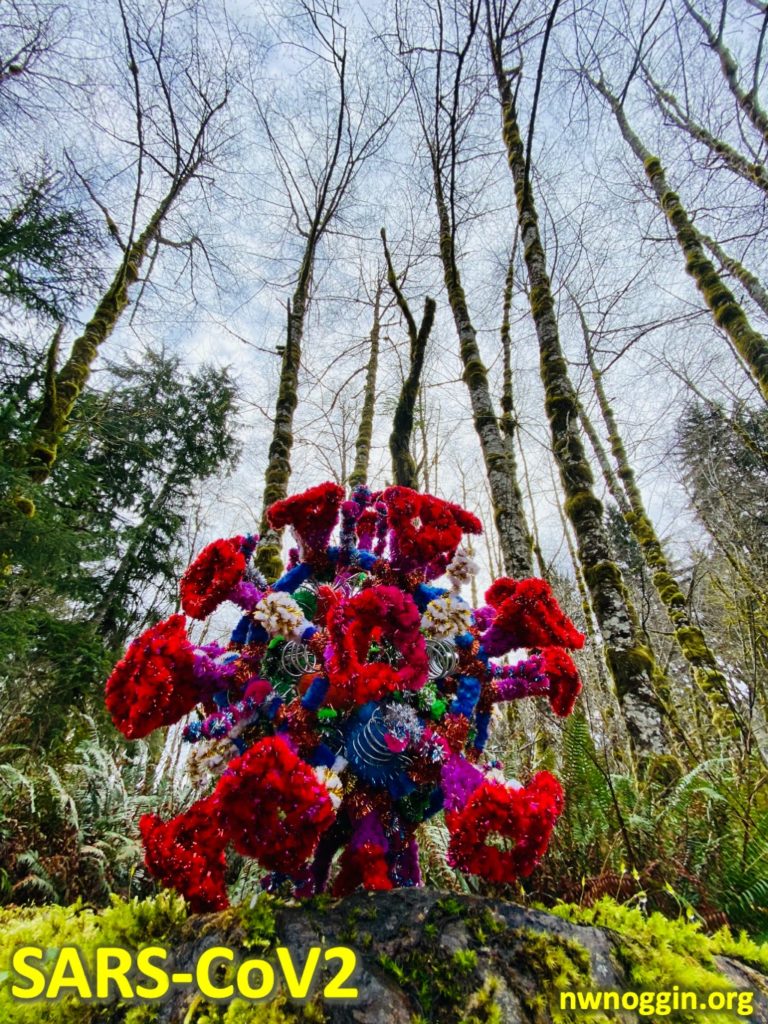
When taking photographs, so many people walk over, or if driving literally slam on their brakes to get a closer (though 6′ maximum!) look, ask (masked) questions, share their own fears and good wishes and offer a thumbs up!
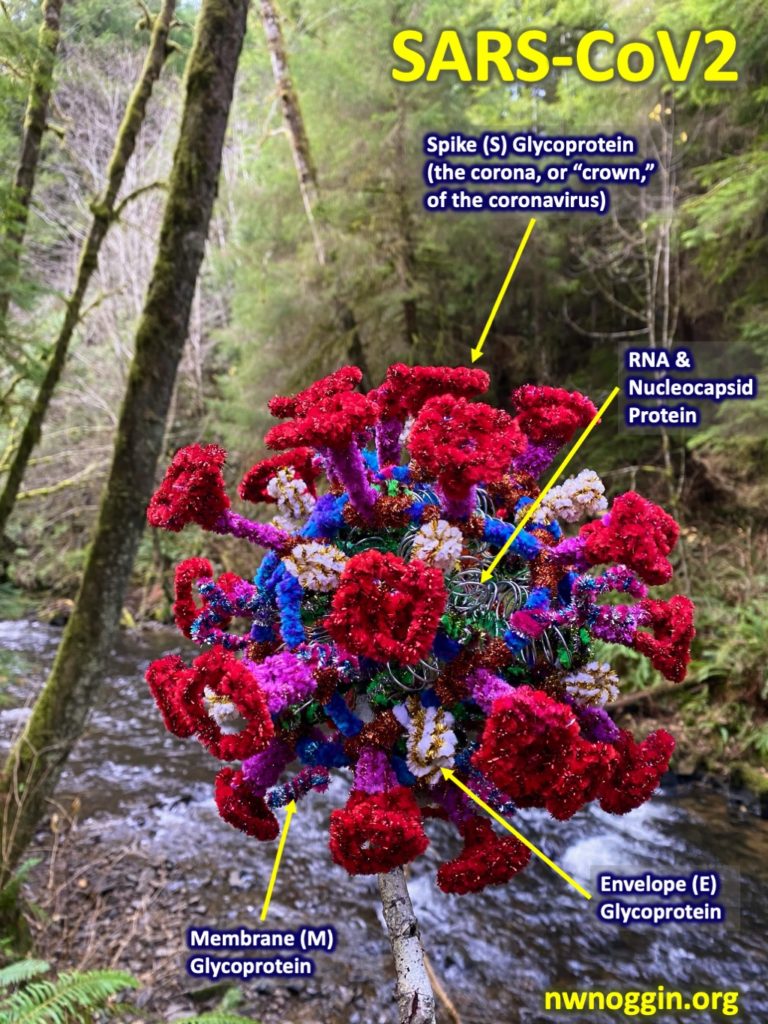
So a safe Happy Holidays from everyone at NW Noggin: take care of yourselves and each other, support research, follow evidence, wear masks, physically distance, and vote for people who back science and encourage inclusion, participation and community.
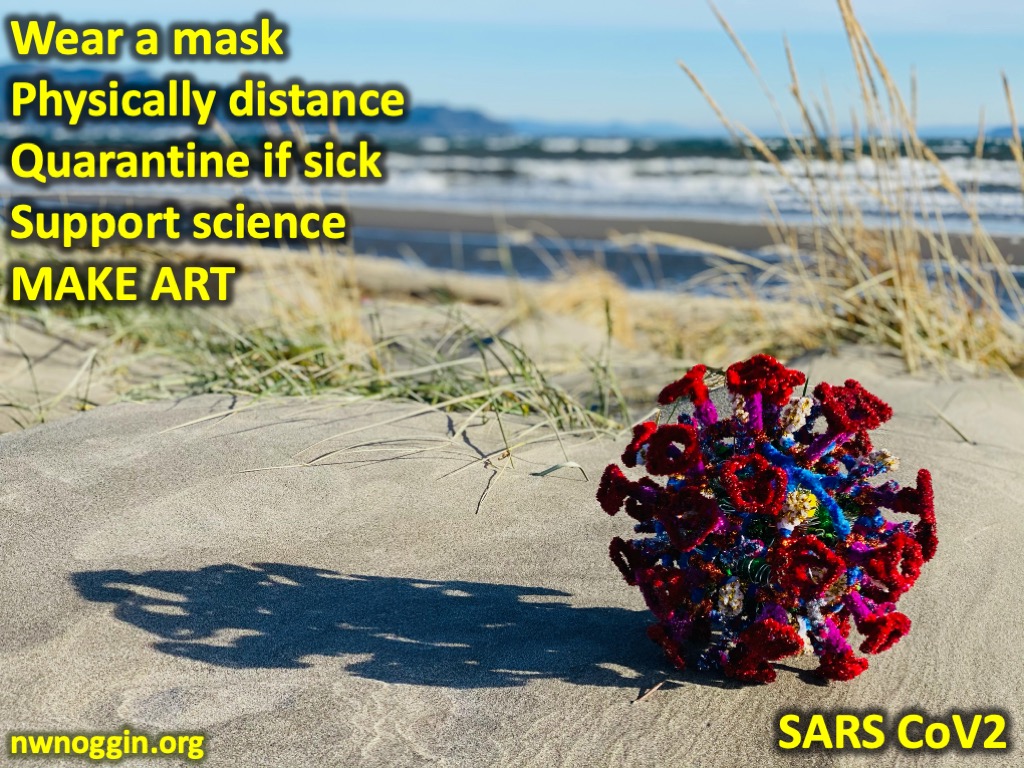
And make more art!
Post your own coronavirus! And please tag #nwnoggin 



 Art and science, unlike COVID-19, are wonderful to spread.
Art and science, unlike COVID-19, are wonderful to spread.
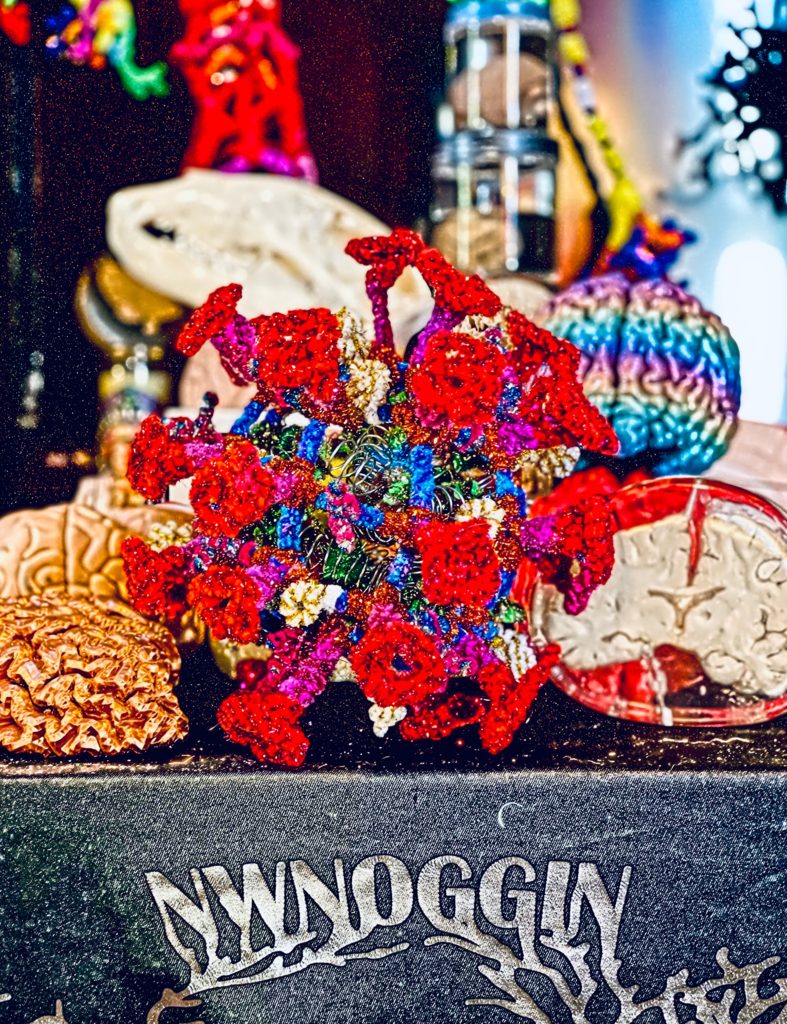
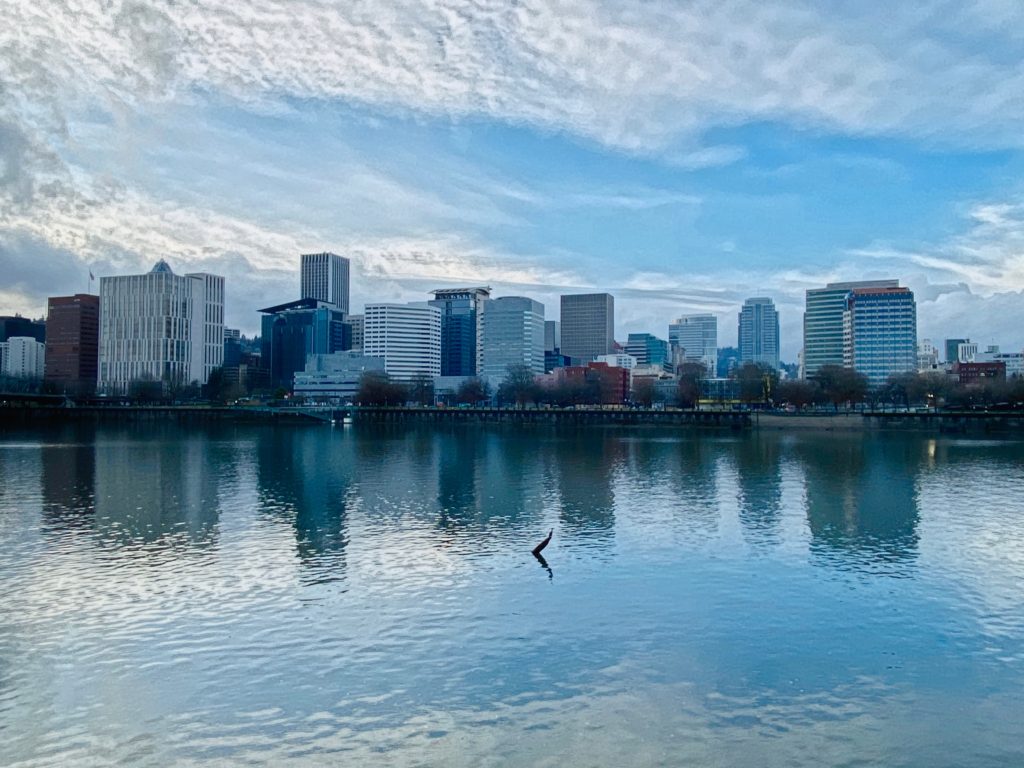
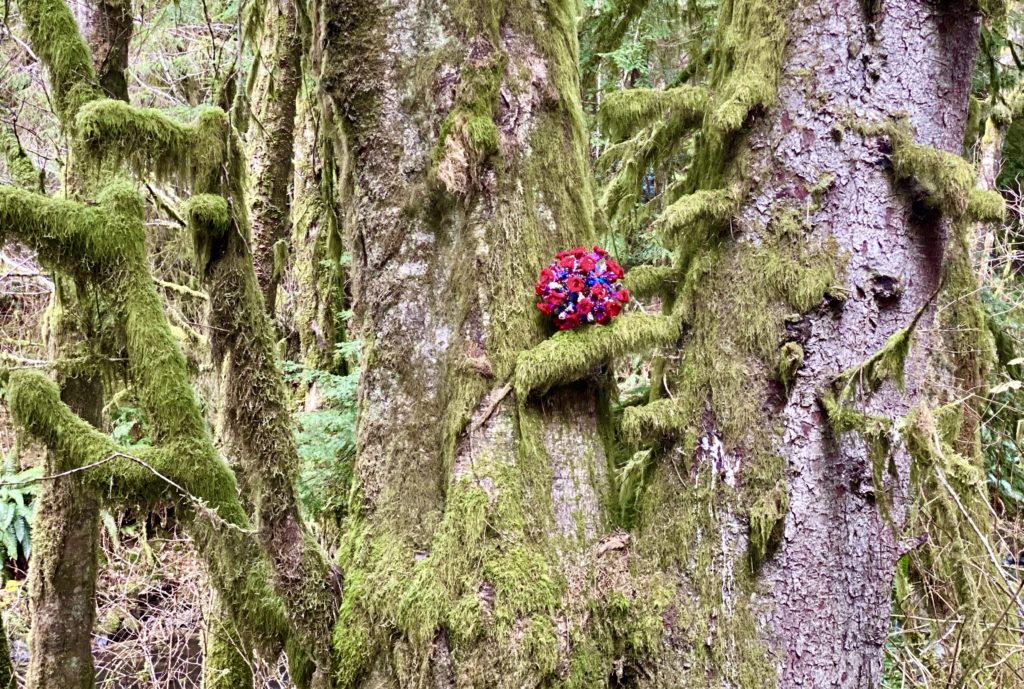
Some updated images and figures (August 2021)


More images here: Cross-Country Noggins!
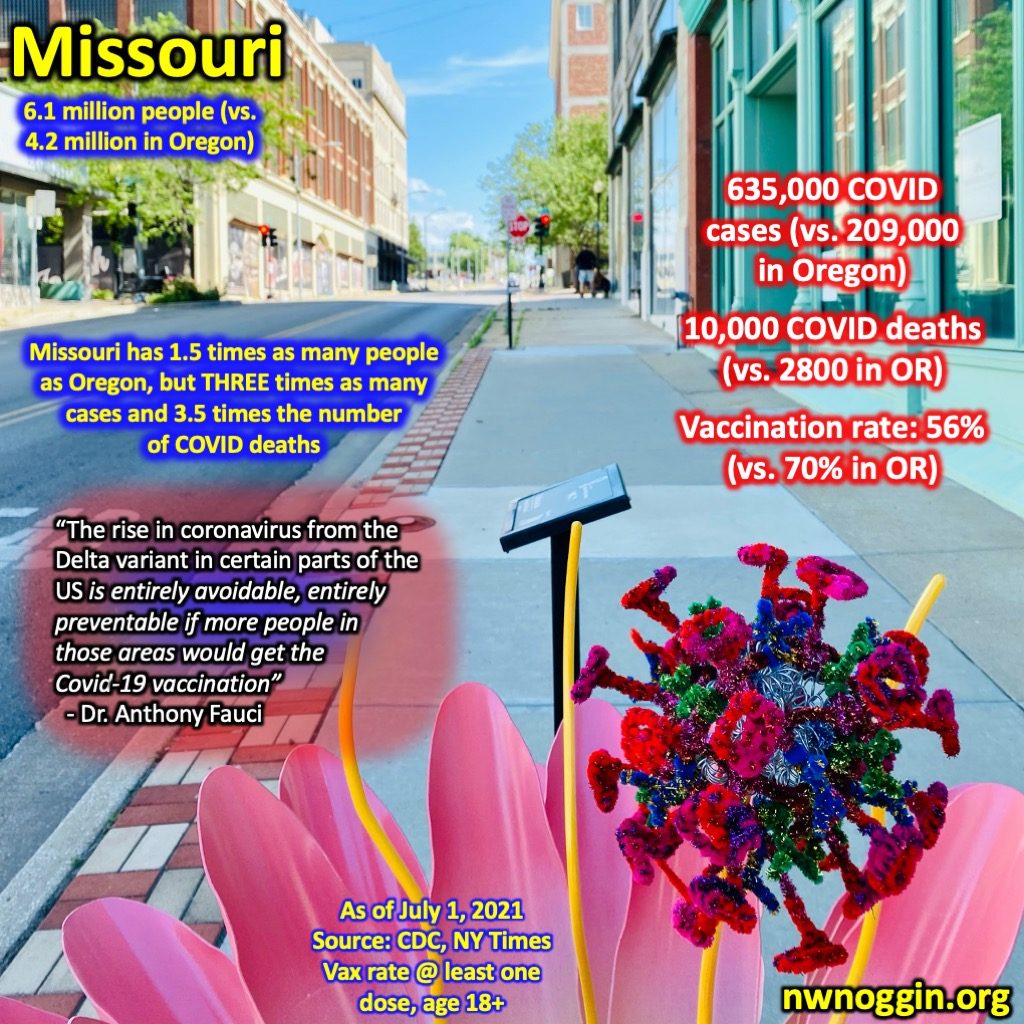




 (@DNA_RNA_Uni)
(@DNA_RNA_Uni)